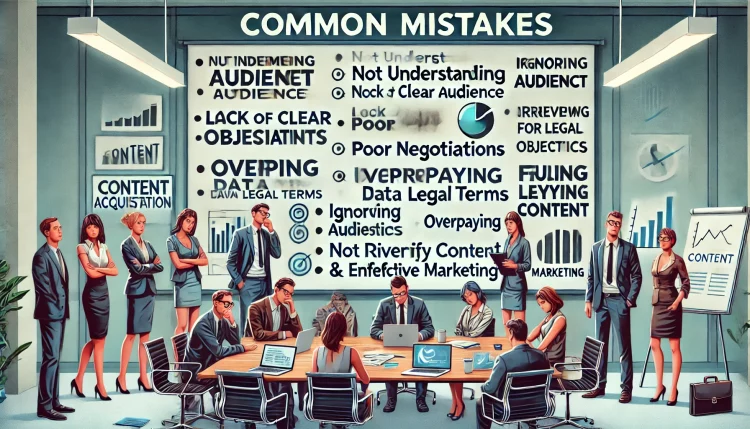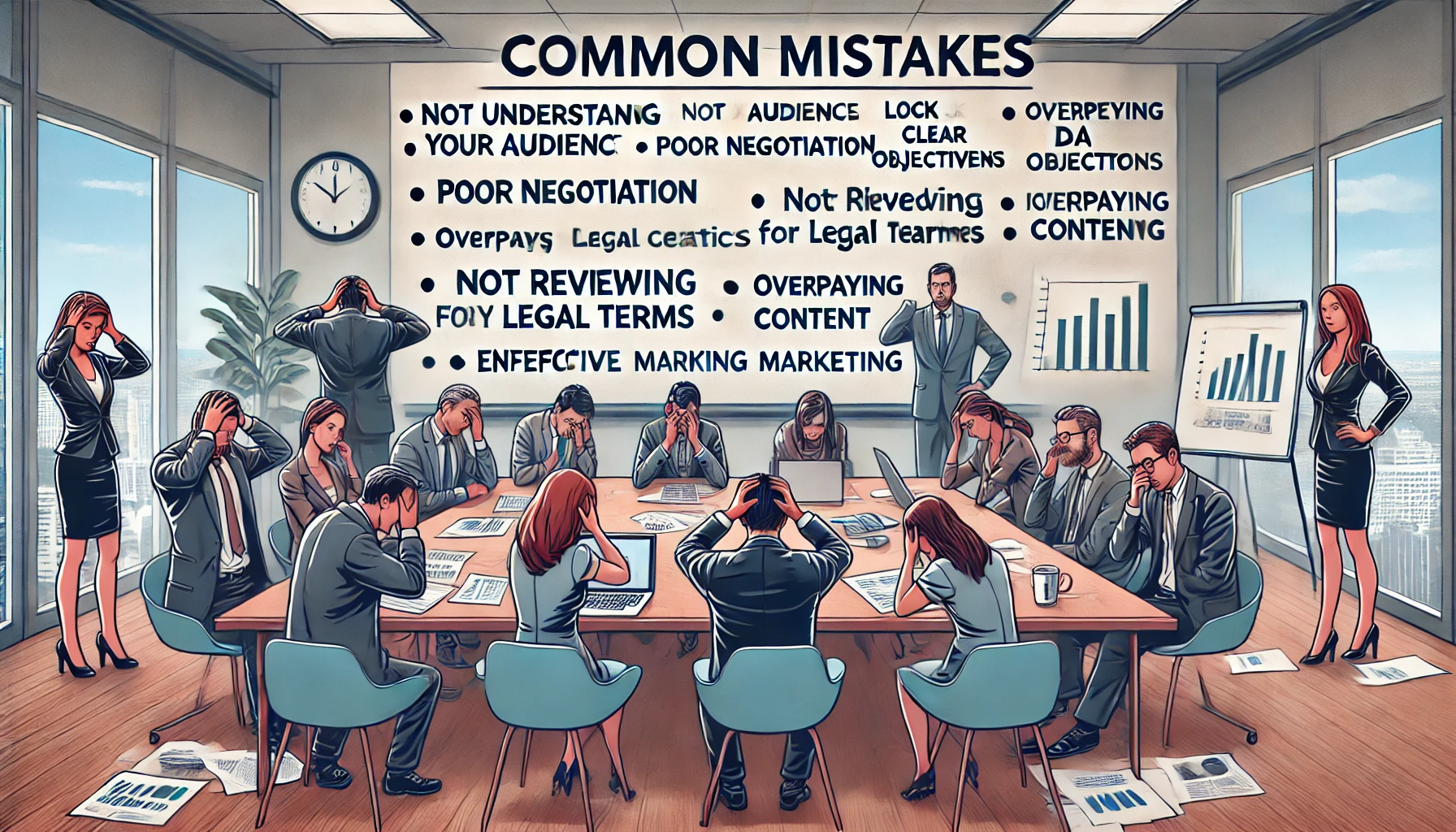In the fast-paced world of entertainment, content acquisition is a critical process that can make or break a company’s success. However, many professionals fall prey to common mistakes in content acquisition, potentially costing them valuable opportunities and resources. This comprehensive guide will help you navigate the tricky waters of content buying strategies, ensuring you make informed decisions and avoid pitfalls that could hinder your success in entertainment industry acquisitions.
Content is the lifeblood of the entertainment industry. From blockbuster movies to binge-worthy series and chart-topping music, acquiring the right content can propel a company to new heights. However, the process is fraught with challenges, and mistakes in content acquisition can have far-reaching consequences for media licensing and distribution.

1. Neglecting Market Research
One of the most common mistakes in content acquisition is failing to conduct thorough market trend analysis for content. Many buyers rush into deals without understanding their target audience’s preferences or current market trends.
To avoid this mistake:
- Analyze viewing habits and preferences through audience preference analysis
- Study competitors’ successful content
- Use data analytics tools to identify emerging trends
Ready to Streamline Your Content Acquisition?
Connect with top sellers and legal experts in the entertainment industry.
Complex licensing agreements often lead to costly errors. Buyers may miss crucial details about distribution rights, exclusivity clauses, or territory restrictions, leading to media licensing pitfalls.
Key points to consider:
- Carefully review all licensing terms and digital rights management clauses
- Seek legal advice when necessary
- Negotiate flexible terms that align with your global distribution rights strategy
Ready to streamline your content acquisition process? Sign up on Vitrina to connect with top content sellers and legal experts in the entertainment industry.
Complex licensing agreements often lead to costly errors. Buyers may miss crucial details about distribution rights, exclusivity clauses, or territory restrictions, leading to media licensing pitfalls.
Key points to consider:
- Carefully review all licensing terms and digital rights management clauses
- Seek legal advice when necessary
- Negotiate flexible terms that align with your global distribution rights strategy
Ready to streamline your content acquisition process? Sign up on Vitrina to connect with top content sellers and legal experts in the entertainment industry.
Miscalculating the total cost of acquisition is a frequent mistake. Many buyers forget to account for additional expenses beyond the initial purchase price, highlighting the importance of content acquisition budget planning.
Remember to budget for:
- Marketing and promotion
- Localization and dubbing
- Technical requirements for distribution
Discover Diverse Content Options
Explore thousands of titles across various genres and formats.
Putting all eggs in one basket is a risky strategy in content acquisition. Relying too heavily on a single genre or format can leave you vulnerable to shifting market trends, emphasizing the need for effective content portfolio management.
Strategies for diversification:
- Balance between established hits and innovative new content
- Mix genres to appeal to a broader audience
- Explore emerging formats like interactive or VR content
Discover a diverse range of content options. Create your free Vitrina account to explore thousands of titles across various genres and formats.
In the rush to secure popular content, buyers sometimes overlook the importance of the content creator vetting process. This can lead to partnerships with unreliable or problematic individuals or companies.
Essential steps in due diligence in media purchases:
- Research the creator’s track record
- Check for any legal issues or controversies
- Assess their ability to deliver on time and within budget
In today’s global market, failing to consider international content appeal is a significant mistake in content acquisition. Content that performs well in one region may not translate to success in others.
Factors to consider:
- Cultural relevance and sensitivity
- Language barriers and translation quality
- Local regulations and censorship laws
Transform Your Buying Strategy
Gain expert insights and powerful tools to avoid common acquisition mistakes.
Avoiding common mistakes in content acquisition is crucial for success in the entertainment industry. By conducting thorough market research, carefully reviewing licensing terms, considering long-term value, accurately budgeting, diversifying your portfolio, performing due diligence, and considering international appeal, you can significantly improve your content buying strategies. Platforms like Vitrina offer invaluable resources and connections to help you navigate these challenges and make smarter buying decisions in entertainment industry acquisitions.
The most common mistake is often neglecting thorough market research before making acquisition decisions. This can lead to purchasing content that doesn’t resonate with the target audience, highlighting the importance of audience preference analysis.
To avoid overpaying, it’s crucial to conduct comprehensive market analysis, understand the content’s potential value across different platforms and territories, and negotiate terms carefully. Utilizing platforms like Vitrina can provide valuable market insights and connect you with a range of sellers, aiding in content valuation methods.
balanced approach is typically best. While established hits offer more predictable returns, new content can provide unique opportunities for growth and differentiation. The key is to maintain a diverse portfolio that includes both proven successes and promising new acquisitions, emphasizing the importance of content portfolio management.
In today’s globalized entertainment market, international content appeal is increasingly important. Content that can perform well across multiple regions and cultures often provides better return on investment and opens up more distribution opportunities, making it a crucial factor in content buying strategies.






























